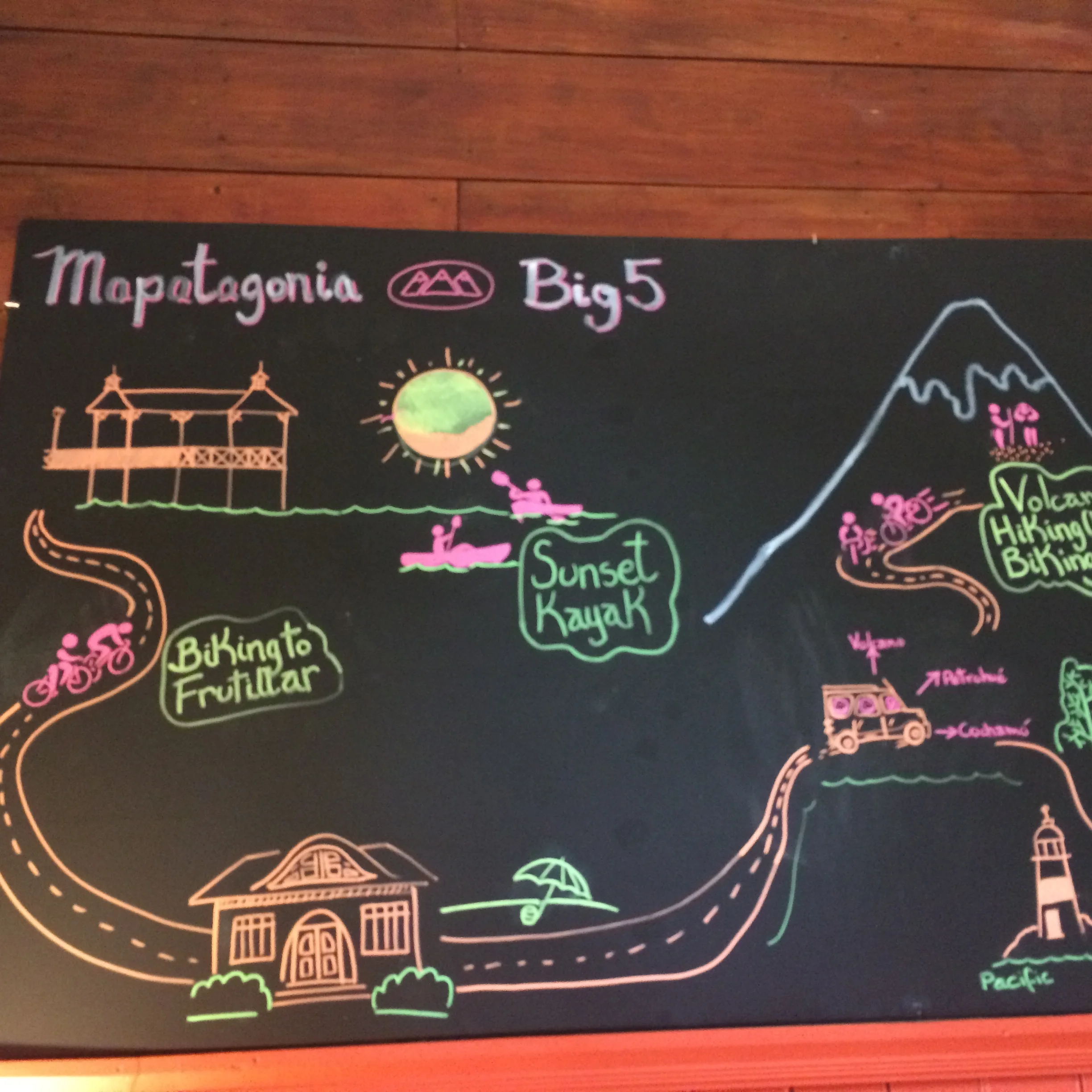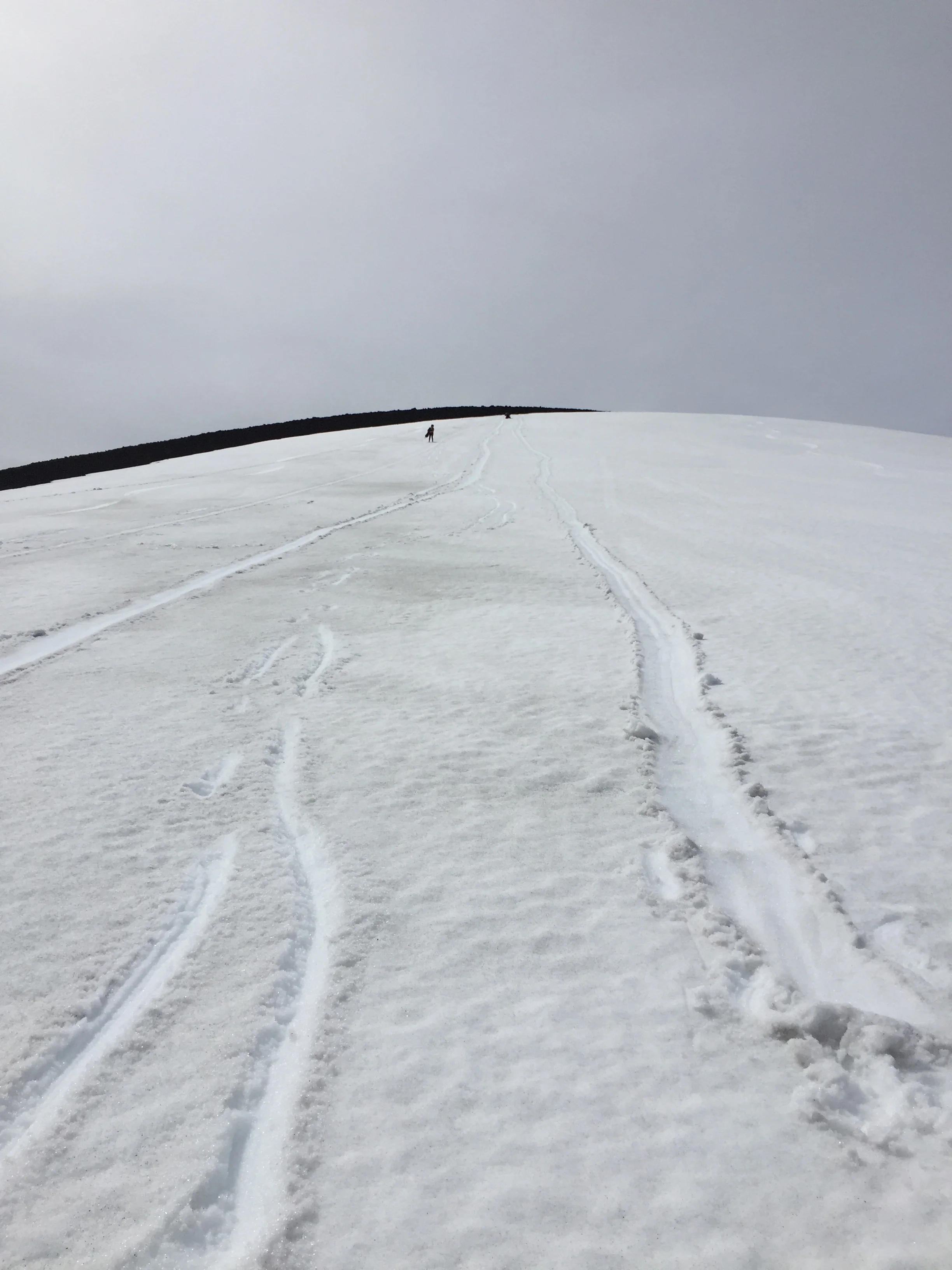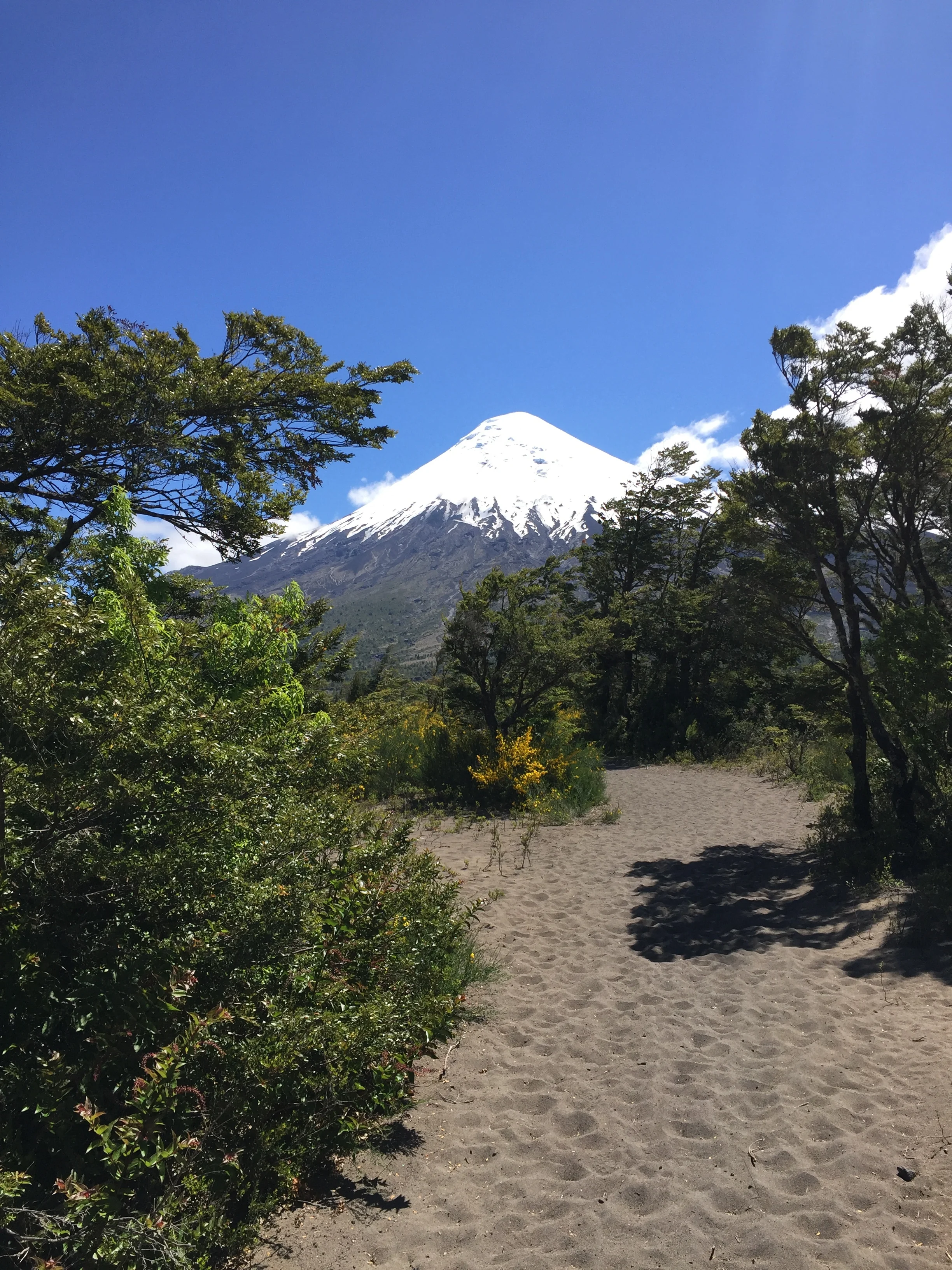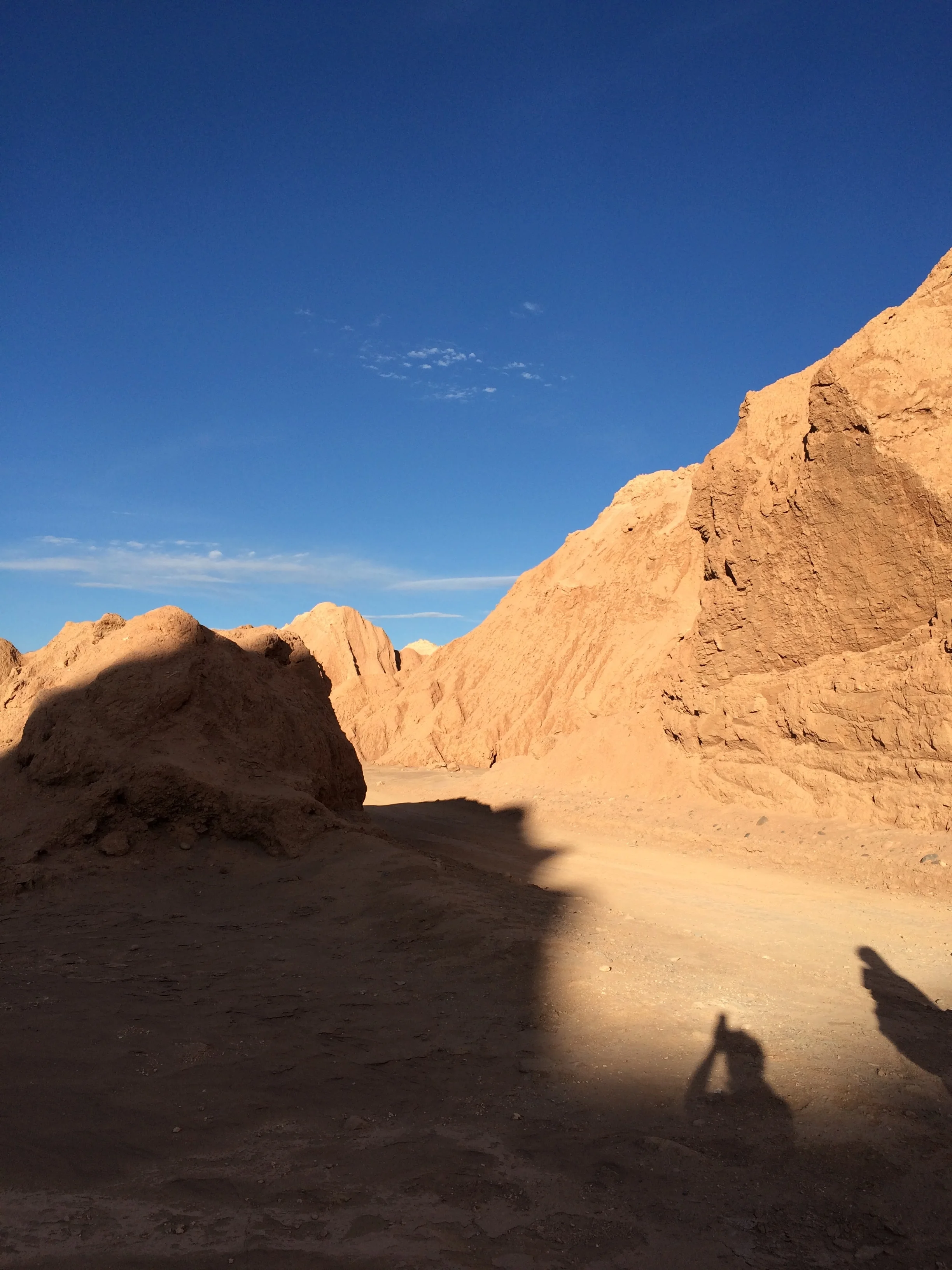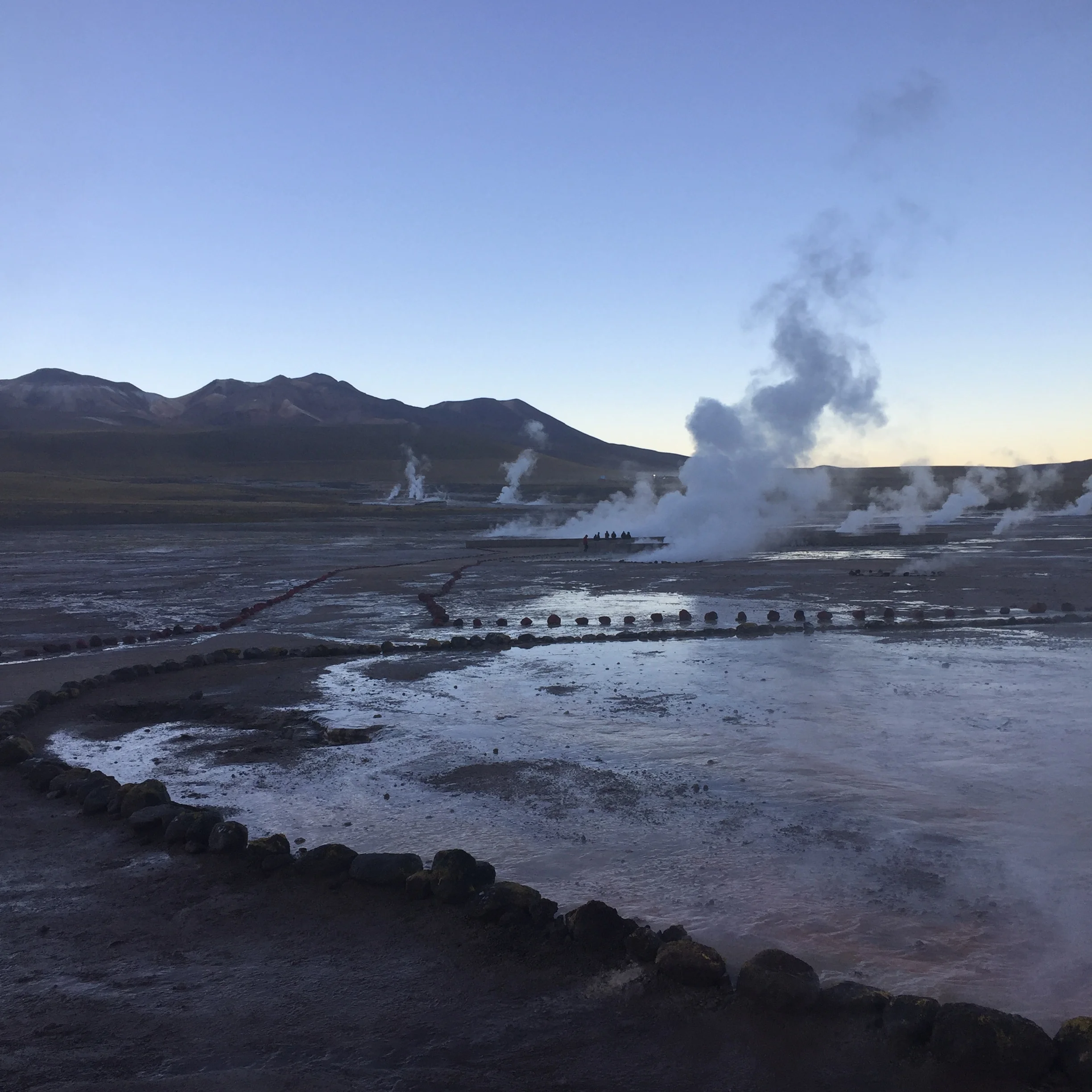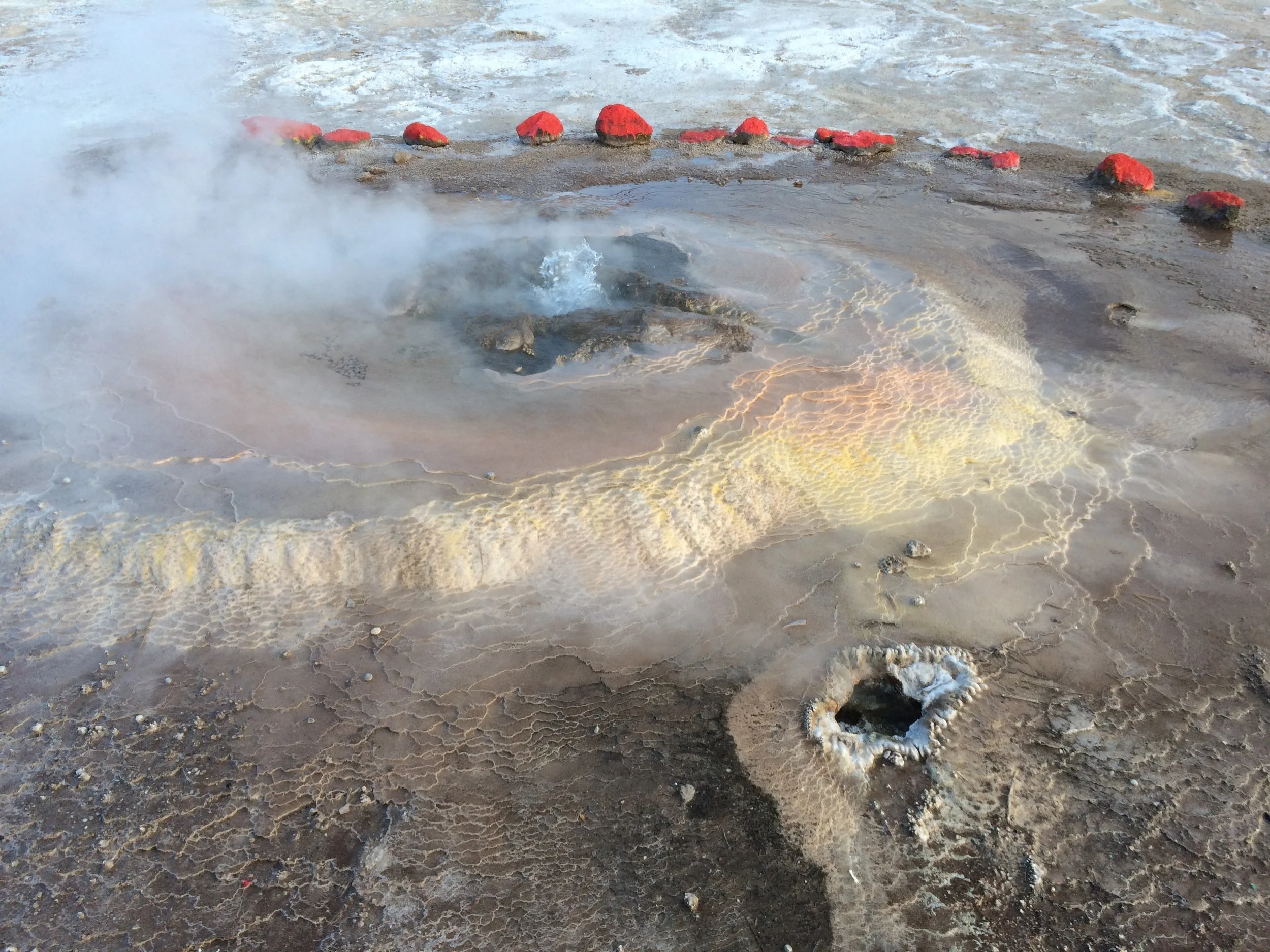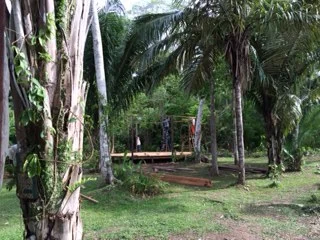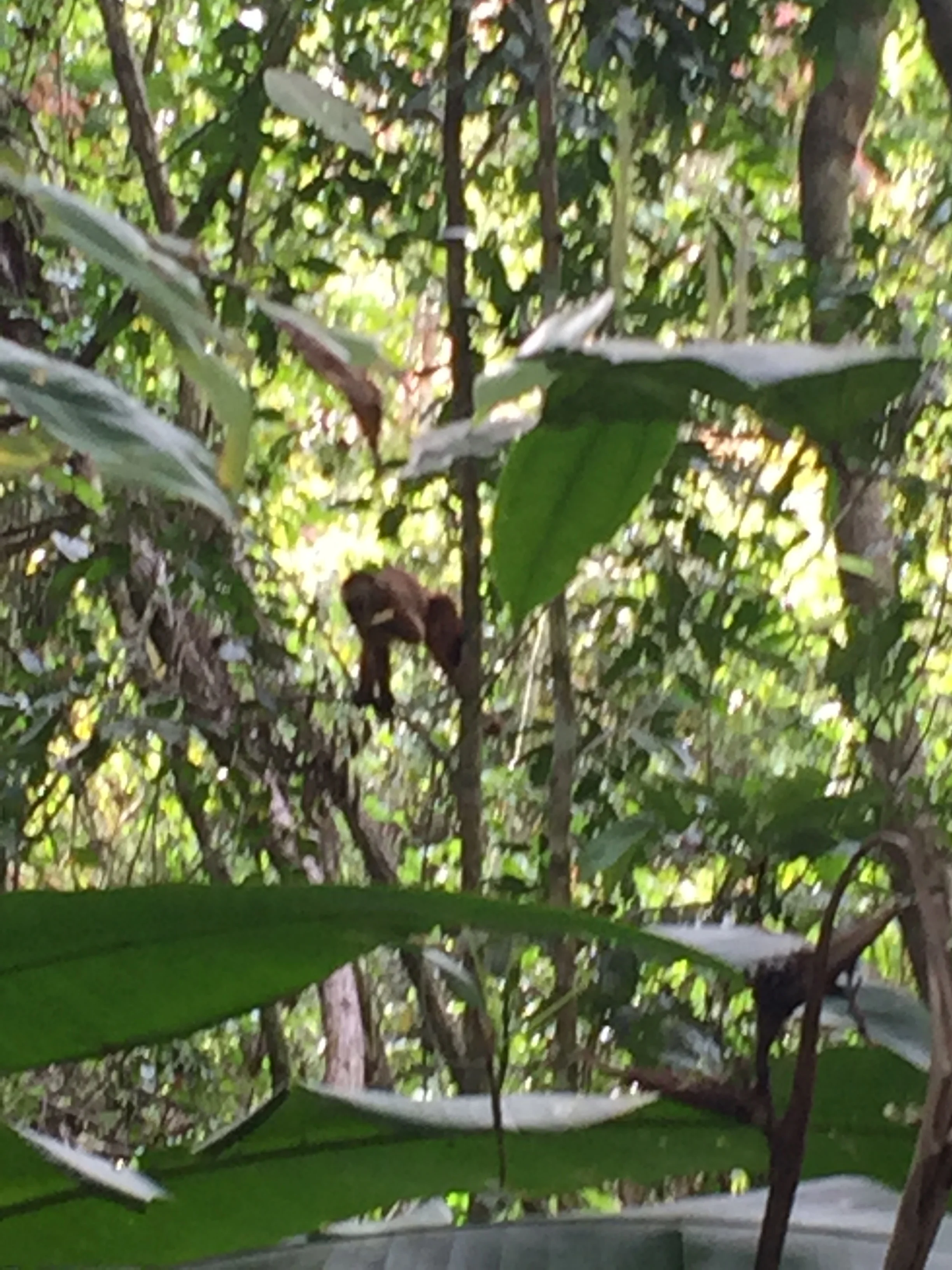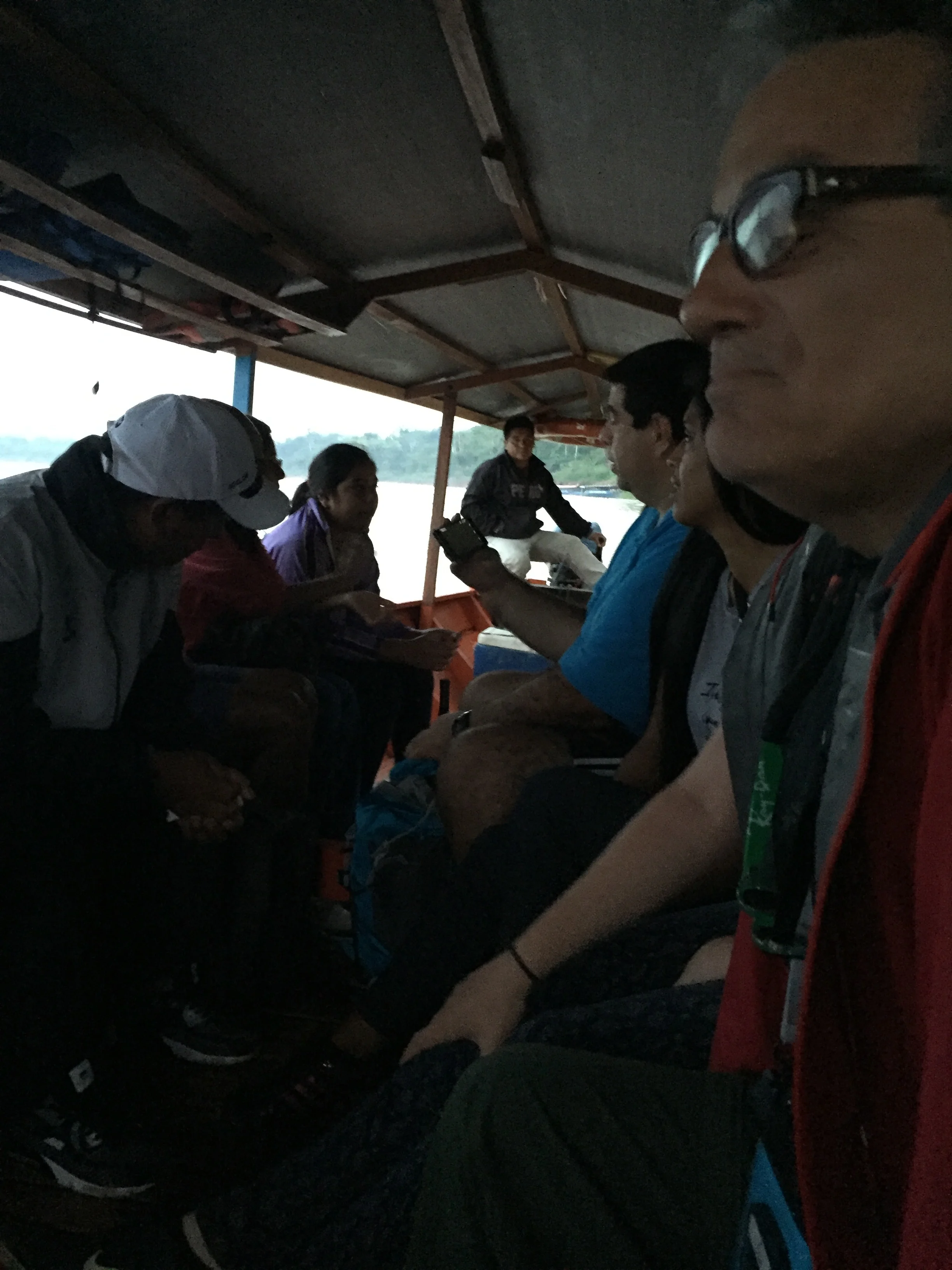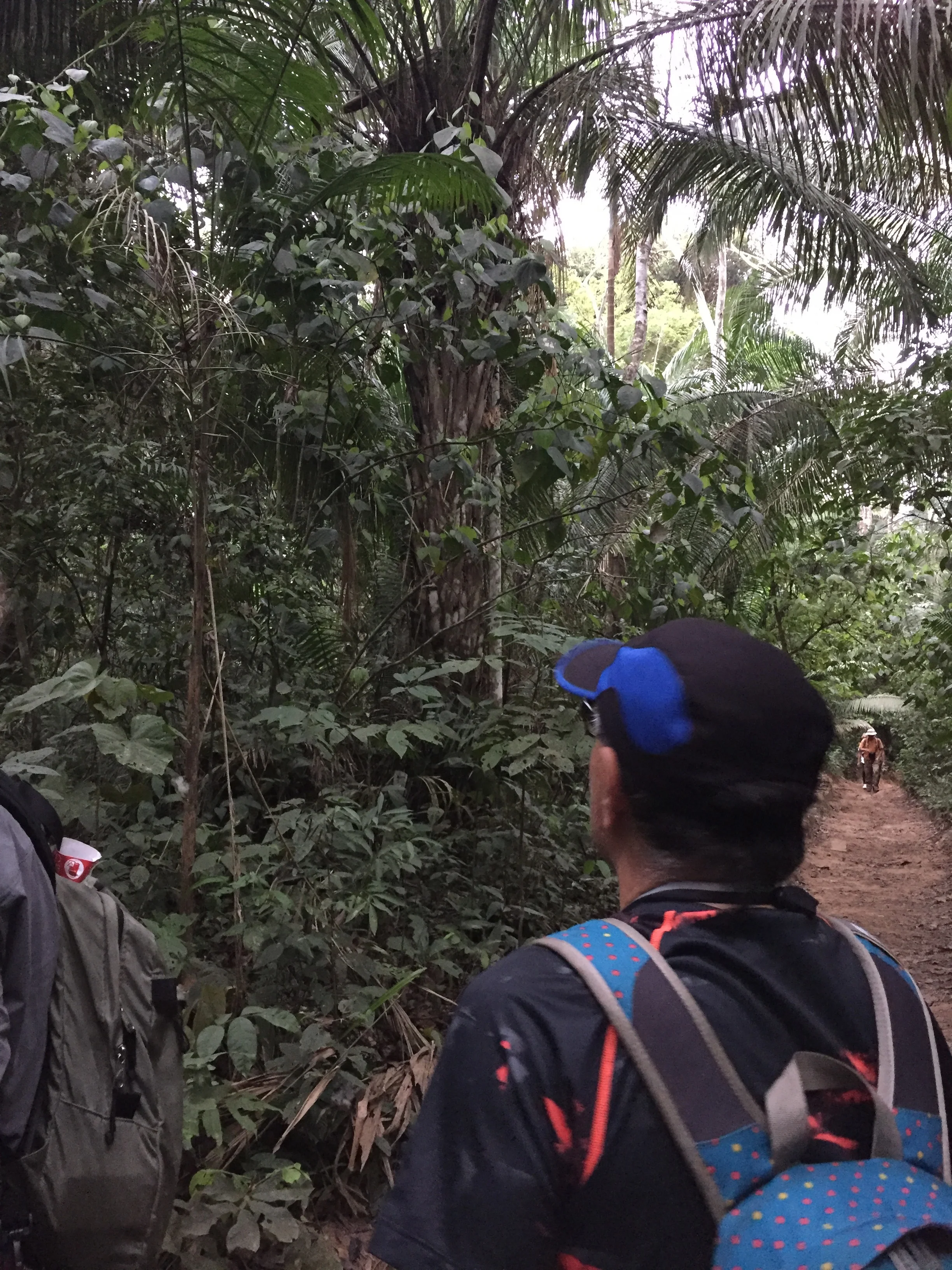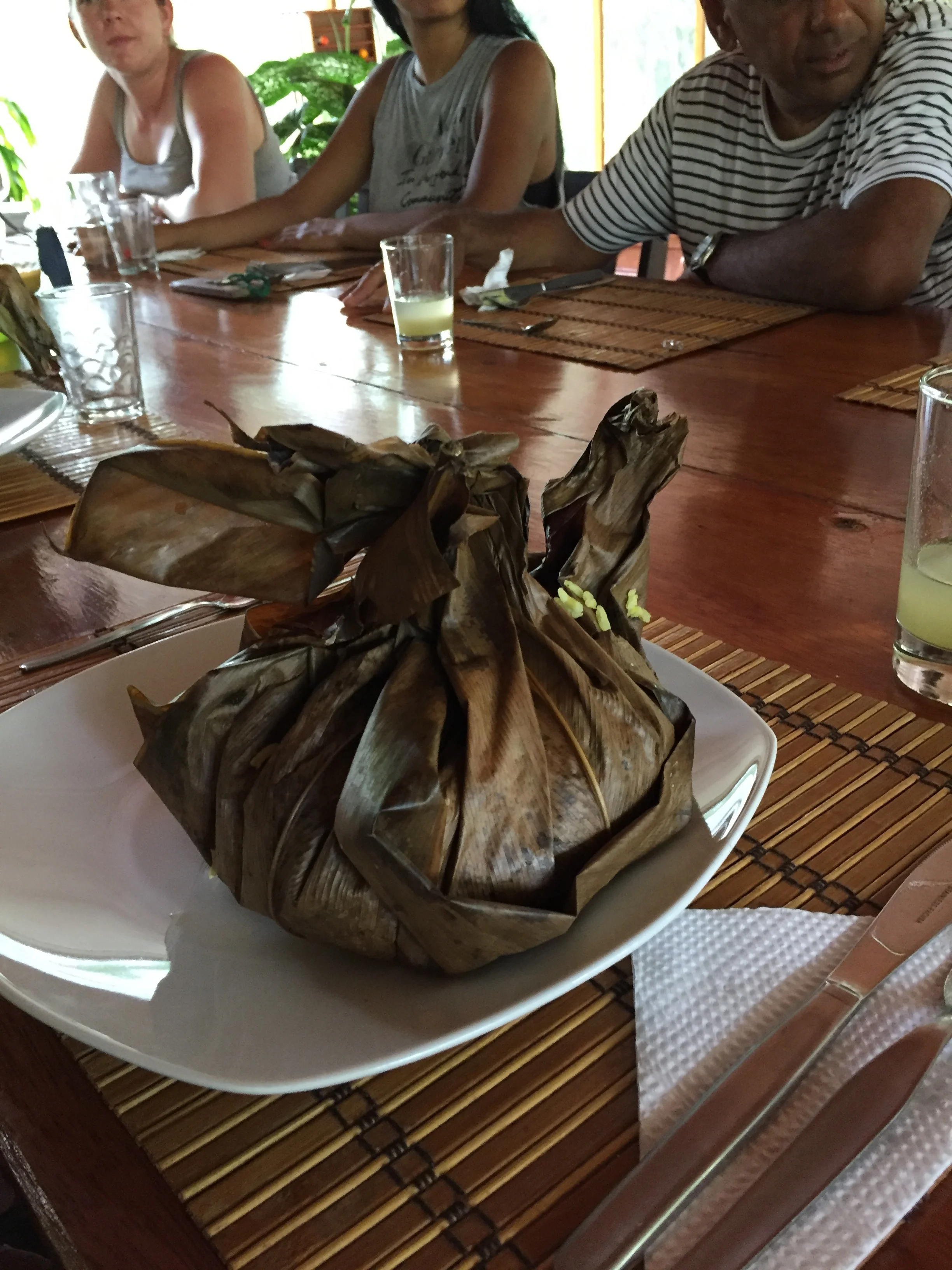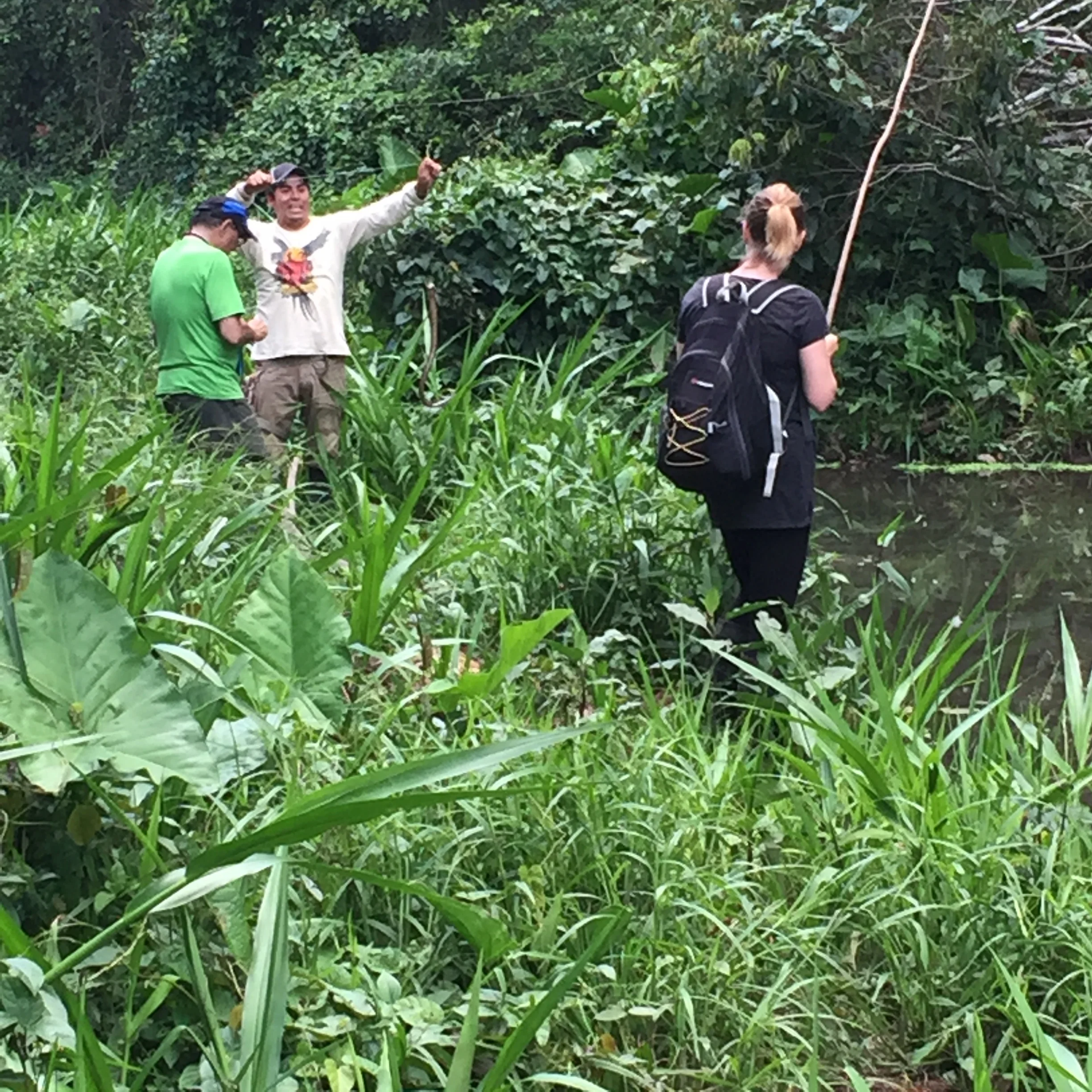We traveled from Easter Island to Santiago on a late flight traveling through the night. After all of our bus travels we have to admit that bus sleeping is more comfortable than air sleeping. We spent one additional day in Santiago at a hostel with very kind owners who assisted in washing our clothes, trying to get the MacAir fixed (no luck) and letting us stay an extra 8 hours after checkout and finally driving us to the bus stop. Thank you Santiago Hostel Mery
We are now traveling south through Patagonia. We will spend 3 weeks in this region crossing the Argentina border several times. This part of the trip it is all about the outdoors, hiking and exploring some of the most remote and unique landscapes in the world.
The town square
Our first stop is the small town of Puerto Varas in the Northern lake region of Patagonia. This is a tourist town surrounded by a large lake and three volcanoes, one active with the last eruption just 2 years ago. They ski here from July to October and it is a summer resort town for water sports, hiking and biking. The town was settled by German immigrants and we can see the influence in the building and the cake shops on every corner. We stayed at a true hostel and for the first time had a shared bathroom and common kitchen.
The view of the lake from the town square
Our hostel
After a discussion with our wonderful host we signed up for an all day excursion up the volcano. Our host assured us that the hike was easy enough and his tours leave late, 11:00 am he chuckled.
The excursion board at the hostel
The entrance to the trail
We traveled with 7 other lodge mates for two hours until we reached the base of Volcan Osorno where we hiked up to the top. 4 grueling hours. Once again we were the oldest of the group but not the last in the group. It was a great accomplishment and the views were just the reward we needed. On the way down we reached a point of steep snow, I joked with our guild about needed a sled, then without any thought I dropped to my butt and slid down the mountain. The group did follow, our guild was laughing and told me no one had ever done that, what fun.
The view from the drive we hiked beyond the snow line
Our guide at the base
Frank climbing
The view from the half way point
The top
The way down. Janet is at the bottom sledding
Frank is at the top starting to sled
After the mountain we traveled to a bamboo forest for a quick hour hike to a waterfall. The forest was really unique the bamboo is not hollow Iike the Asian variety but looks exactly the same and gives the forest a tranquil feeling. Then we reached the waterfall and it was magnificent, very high and at the waters edge the air was full of the mist, the canyons surrounding it are lush green, this is truly a magical place. It was great day and great way to start hiking Patagonia.
The bamboo forest
One of the many bridges on the path
The falls
Frank in the mist
Janet in the mist
Day 2 – Frank
Frank on the boat trip
November 8, 2016, which later became Nov.9th at 3:00 am., a day that will live in infamy.
We planned a light trekking trip in the nearest national park. We took the local bus which embarked just 3 blocks from our hostel. We had ridden these buses before but it was never exactly clear what the fare would be—the sign only said minimum 500 pesos. This time an attendant was loading the buses and said 2000 pesos each, or 4000 pesos, or $6.03 US. I handed the driver the money, but he did not seem to want it. Then we heard voices that instructed to pay driver when you exit. Those voices were from fellow hostel guests. That's when we met Stephanie and Hendrik who lived in Austria, and who Janet recognized. The ladies hit it off and as they talked about certain trips and tour, then the guys started interacting too. One happy group, who were planning the same excursion, albeit in a separate order. But we kept gabbing and decided to check out the park together. We got off the bus and walked to the entrance and up to this beautiful lake. We decided to take a ferry ride around the lake and get some fresh air and photographs. Hendrik had serious equipment and lens filters. It was interesting watching him set up, where I like the point and shoot method using the iPhone. The ride was pleasant and the air fresh and clean. Once docked we decided to trek.
The view of the volcano from the boat, this is the same volcano we hiked but the opposite side
Frank and Janet on the boat
Our trekking path in the National Park
Chilean public workers were on strike again! But, the gate was open so we just went in. Janet and I always bring out trekking poles, so we stay serious and safety conscious. We walked and told stories; you guys know what a good story teller Janet is, especially when she talked about her European excursions and mishaps. Our new European friends seemed to enjoy them too, and reciprocated with lighthearted stories of their own. Both are very educated and at the beginning of their professional careers, not career break professionals like us. Hendrik just completed his Ph.D. in engineering and Stephanie completed her second masters degree. We ate packed lunches on the trail, and we walked back just in time to catch the bus to the waterfalls location.
As the road paralleled next to the raging river, we talked about whitewater rafting in Costa Rica, and that is exactly how that river looked, you know the river where Janet fell out of the raft and was swept so quickly by the current that she had to be picked up by rafts well in front of us. In any event, we entered the second park and walked the river banks until, to my amazement, we saw multiple river falls that were flowing through the rocks with enormous velocity and power. It was beautiful, with various shades of blue and white foam. I hope my point and shoot photos do the site justice. These were the second falls we observed in the Puerto Varas area; different---but each evoked a spiritual appreciation of the nature we were seeing.
Checking the time, we get to the last bus on route back to Pte. Varas. I think we are all satisfied with the excursion. We share chocolates, and play the iPhone quiz game “94”; it's like TV’s Family Feud without the feud or family. They got right into it. We have to thank our UK friends Emma and Hazel for this game.
Back in town, we split up. They to shop and us to prepare dinner and check politics in the USA.
The path to the waterfall
One of many river falls
Election:
We prepared dinner in the community kitchen. The dining room was jammed with backpackers from UK, Australia, Germany, and France. We were sitting at the table with our IPad streaming election coverage of the US Presidential race. Everyone had questions about the process, and some were very attuned the backstory of the campaign and also talked about the EU BREXIT comparison of the issues and voters. The question was did these voters really know ramifications of voting a certain way. The host routed CNN into his large TV, which got everyone's attention. We talked about the red states and blue states and the point system
( electoral college) that was used to determine the winner. They were not quite buying into the most votes doesn't always win scenario. Little did I know that would be the outcome today. We went to bed at midnight Chilean time, which is 2 hours ahead of EST. At that time, CNN was analyzing Hillary’s chances to take Virginia. Their discussions of Trump seemed like manufactured hype to keep viewers.
The morning paper in Chile
At 3:00 am. Janet woke me up, her computer screen lighting the room: “Trump is going to win” she said. I became alert and started watching, and watched until Trump spoke, hardly believing the outcome. Trump did say he might work 2,3,4 or 8 years as President in that speech. Well, we shall see how life goes. The next day while at a small bus station, there was a Spanish TV station showing a piñata of Trump being smacked with a stick; the clerks reacted with laughter; I must confess it was a pretty good caricature.




